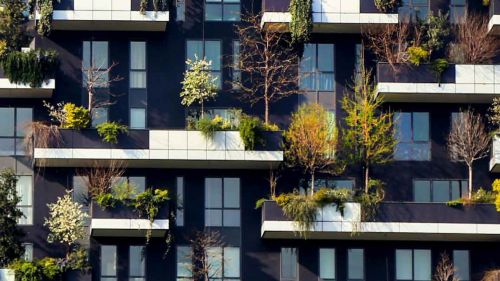The Global Commitment to Sustainable Development: How Are We Doing?

Since the adoption of the SDGs, governments, the private sector, and non-governmental organizations have restructured their priorities and refined their policies, business models, and supply chains.
Sustainable Development Goals
The 2030 Agenda for Sustainable Development Goals (SDGs), adopted by all United Nations Member States in 2015, provides an outline and urgent call to action by the global community to address the collective challenges we face, and the specific strategies and targets necessary to overcome them. Highly nuanced and intersectional, the 17 SDGs touch every aspect of our daily lives from health to work to food systems, and build on decades of work, such as the Millennium Development Goals.
Since the adoption of the SDGs, governments, the private sector, and non-governmental organizations have restructured their priorities and refined their policies, business models, and supply chains. Civil societies, too, have advocated for more sustainable, more resilient, and more progressive actions from neighbors, representatives, and business executives.
With global investments and commitments to sustainable development seemingly strong, one wonders, how are we doing? Is the world on track to achieve these lofty goals?
We’ve made progress in some ways. For instance, today more people have access to electricity than ever before, under-five mortality rates have plummeted since 2000, and nearly every country on the planet has agreed to the Paris Climate Agreement, signifying international understanding of and commitment to solving our global climate crisis. But we’ve stalled, and even moved backwards, on many other indicators.
Goal 2 to eliminate hunger is an uphill battle as populations continue to rise, particularly in developing regions, producing more mouths to feed. The proportion of undernourished people worldwide increased from 777 million in 2015, to 815 million in 2016. That’s two and a half times the population of the United States without enough to eat. By 2050, experts predict nearly 10 billion people will live on the planet, requiring more food production, more jobs, and more infrastructure to support the next generation.
Goal 11, which targets the building of resilient and sustainable cities, is struggling to combat air pollution. In 2016, 91 percent of urban populations worldwide were breathing air that did not meet World Health Organization standards, killing some 4.2 million people as a result.
Goal 15, which seeks to protect life on land and its complex ecosystems, is running into changing global dietary demands, deforestation, and climate change. While the rate of forest loss has slowed, the total area of the earth’s forests has decreased in the last 15 years by the equivalent of two and half Californias, land often cleared to support agricultural development and expand living spaces.
Simply put, we’re nearly a quarter of the way to our 2030 target and not nearly as far along as we should be. There’s need for continued awareness, investment, and action to catalyze progress toward SDG targets.
The High Level Political Forum on Sustainable Development plays a central role in building this awareness, investment, and action by consistently reviewing the 2030 Agenda and its goals. The Forum facilitates the sharing of experiences, including successes, challenges, and lessons learned throughout the process.
Few countries can claim as many successes and lessons learned in achieving their SDG targets as Japan. One of the world’s largest donor countries, Japan has been a leader in advocating for the SDGs in both the public and private sectors. They were instrumental in the SDGs’ formation and began harnessing data, implementing policies, and developing innovations to build a more resilient, sustainable, and healthy society well before the rest of the world.
Shortly after the Goals were announced in 2015, Prime Minister Abe established within his Cabinet the SDG Promotion Headquarters, a committee to ensure the SDGs’ inclusion within and across all branches and activities of the government and society. Not long after that, the SDG Promotion Headquarters released a national strategy, the SDGs Implementation Guiding Principles, to guarantee that the SDG agenda remains a top national priority.
Conversely, findings from SDG USA, which tracks progress in the United States at the state level, found that no state is on track to achieve all SDGs by 2030. With the rollback of environmental protection laws, the withdrawal of US commitment from the Paris Climate Agreement, and drastic reductions to foreign aid and assistance, the United States struggles to compete with Japan’s strong example.
Yet, US cities are taking the reins and accelerating SDG initiatives at the local level, and growing interest in private funding and impact investments in sustainable businesses may fill funding gaps that have slowed progress thus far. Change is happening, and it’s happening right here in Chicago and the Midwest more broadly.

